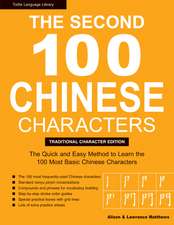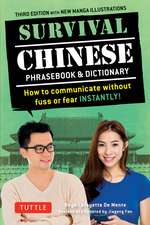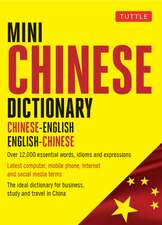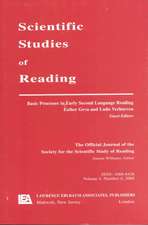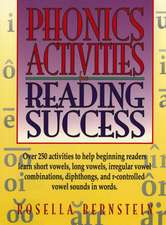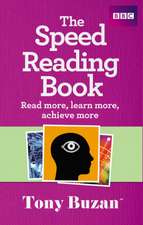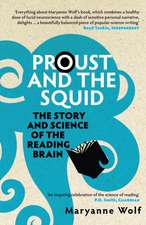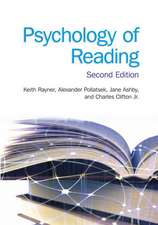Reading and Writing Chinese: Third Edition, HSK All Levels (2,349 Chinese Characters and 5,000+ Compounds)
Autor William McNaughton Revizuit de Jiageng Fanen Limba Engleză Paperback – 23 iul 2013
This is a complete and easy-to-use guide for reading and writing Chinese characters.
Learning written Chinese is an essential part of mastering the Chinese language. Used as a standard by students and teachers learning to read Chinese and write Chinese for more than three decades, the bestselling Reading & Writing Chinese has been thoroughly revised and updated. Reading & Writing Chinese places at your fingertips the essential 1,725 Chinese characters' current definitions, derivations, pronunciations, and examples of correct usage by utilizing cleverly condensed grids. This guide also focuses on Pinyin, which is the official system to transcribe Hanzi, Chinese characters, into Latin script, now universally used in mainland China and Singapore. Traditional characters (still used in Taiwan and Hong Kong) are also included, making this a complete reference.
Newly updated and revised, these characters are the ones officially prescribed by the Chinese government for the internationally recognized test of proficiency in Chinese, the Hanyu Shuiping Kaoshi (HSK). The student's ability to read and write Chinese are reinforced throughout the text.
Key features of this newly-expanded edition include:
Learning written Chinese is an essential part of mastering the Chinese language. Used as a standard by students and teachers learning to read Chinese and write Chinese for more than three decades, the bestselling Reading & Writing Chinese has been thoroughly revised and updated. Reading & Writing Chinese places at your fingertips the essential 1,725 Chinese characters' current definitions, derivations, pronunciations, and examples of correct usage by utilizing cleverly condensed grids. This guide also focuses on Pinyin, which is the official system to transcribe Hanzi, Chinese characters, into Latin script, now universally used in mainland China and Singapore. Traditional characters (still used in Taiwan and Hong Kong) are also included, making this a complete reference.
Newly updated and revised, these characters are the ones officially prescribed by the Chinese government for the internationally recognized test of proficiency in Chinese, the Hanyu Shuiping Kaoshi (HSK). The student's ability to read and write Chinese are reinforced throughout the text.
Key features of this newly-expanded edition include:
- The 1,725 most frequently used characters in both Simplified and Traditional forms.
- All 2,633 characters and 5,000+ compounds required for the HSK Exam.
- Standard Hanyu Pinyin romanizations.
- More mnemonic phrases and etymologies to help you remember the characters.
- An extensive introduction, alphabetical index, and index according to stroke count and stroke order.
- Completely updated/expanded English definitions.
- Convenient quick-reference tables of radicals.
- Updated and revised compounds, plus 25% more vocabulary now offered.
- Codes to assist those who are preparing for the AP exam or the HSK exam.
Preț: 110.67 lei
Nou
Puncte Express: 166
Preț estimativ în valută:
21.18€ • 22.11$ • 17.53£
21.18€ • 22.11$ • 17.53£
Carte disponibilă
Livrare economică 14-28 martie
Livrare express 27 februarie-05 martie pentru 35.19 lei
Preluare comenzi: 021 569.72.76
Specificații
ISBN-13: 9780804842990
ISBN-10: 080484299X
Pagini: 336
Dimensiuni: 152 x 229 x 25 mm
Greutate: 0.61 kg
Ediția:Third Edition
Editura: Tuttle Publishing
Colecția Tuttle Publishing
ISBN-10: 080484299X
Pagini: 336
Dimensiuni: 152 x 229 x 25 mm
Greutate: 0.61 kg
Ediția:Third Edition
Editura: Tuttle Publishing
Colecția Tuttle Publishing
Recenzii de la cititorii Books Express
Anonim a dat nota:
Sunt mulțumită de carte. Sunt prezentate 1067 de caractere, atât în scrierea simplificată, cât și tradițională, ordinea scrierii liniuțelor ce compun fiecare caracter (doar la caracterele simplificate, nu și la cele tradiționale), semnificația caracterelor, precum si cuvinte care conțin caracterele respective, iar în unele cazuri chiar tehnici mnemonice pentru a memora mai ușor caracterul. Restul caracterelor prezentate în carte (în afară de cele 1067) nu prezintă și ordinea în care se scriu (the stroke order). Cartea conține, de asemenea, o listă cu radicalii moderni și o listă cu radicalii tradiționali.
Recenzii
"I wish we'd all been given a copy of this in the first year of university. Even now I can find gems of information about Chinese characters in this book that I didn't know before. It's a nice book to have around." --Hugh Grigg, East Asia Student blog
"…learning how to write Chinese characters will provide a more thorough understanding of their structure and composition, as well as open the door to the world of Chinese calligraphy. William McNaughton's Reading and Writing Chinese is an excellent introduction to this knowledge." --Qiu Gui Su, About.com Mandarin Language
"…this book can be the best choice for Chinese beginners who want to learn Chinese characters. With exact pronunciation, lively definition and derivation, it will make the process of characters learning more interesting and easier." --Yes-Chinese.com
Notă biografică
Jiageng Fan specializes in the linguistic relationship between the Chinese and Japanese languages and scripts, focusing on the etymology of characters. He has lived, studied and taught Chinese, Japanese and English in China and Australia and has traveled extensively. After obtaining a B.A. at Guangdong University of Foreign Studies, then working as a magazine editor, he moved to Christchurch, New Zealand, where he earned a First Class Honours Degree from the University of Canterbury.
William McNaughton was the founding teacher of Chinese at Oberlin College. From 1986 he taught at Hong Kong's City University, where he was the founding program leader of the BA (Honours) program in Translation and Interpretation.
William McNaughton was the founding teacher of Chinese at Oberlin College. From 1986 he taught at Hong Kong's City University, where he was the founding program leader of the BA (Honours) program in Translation and Interpretation.




